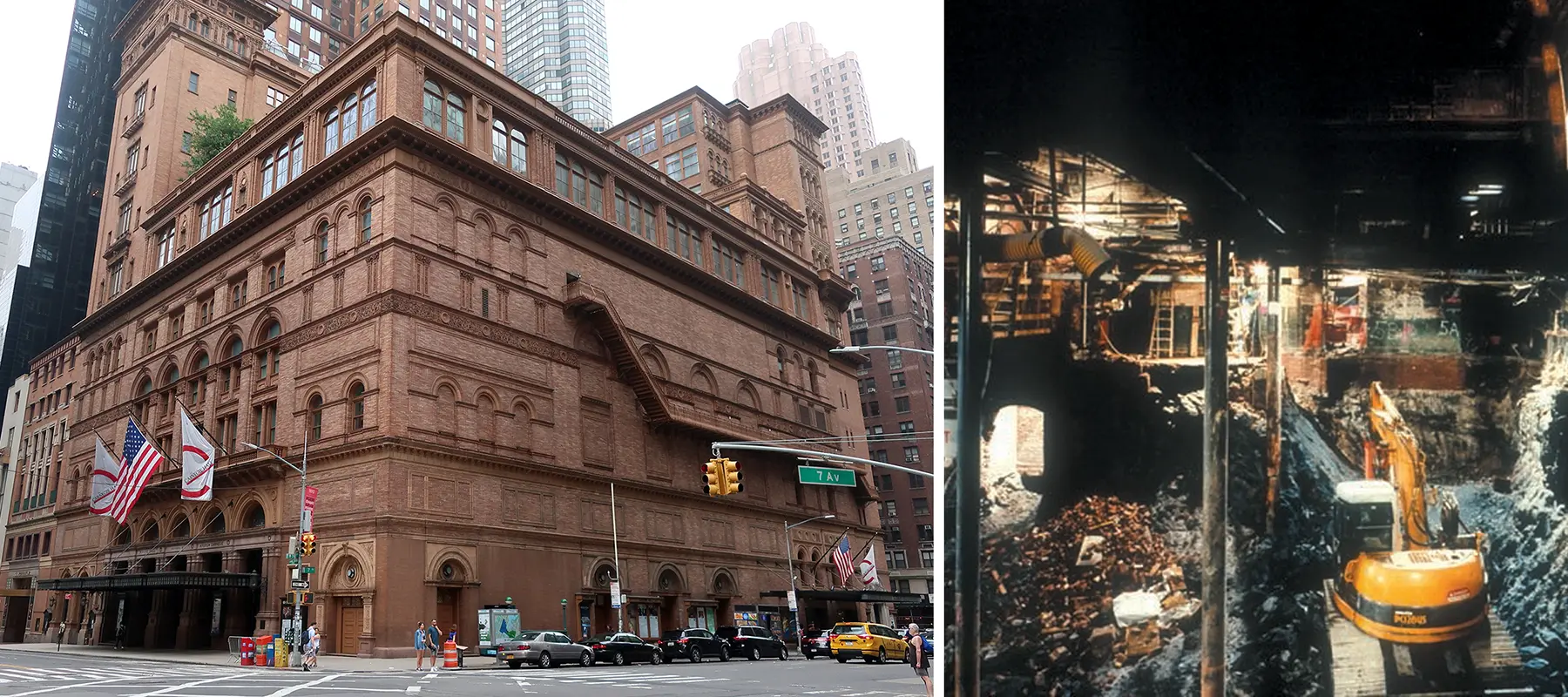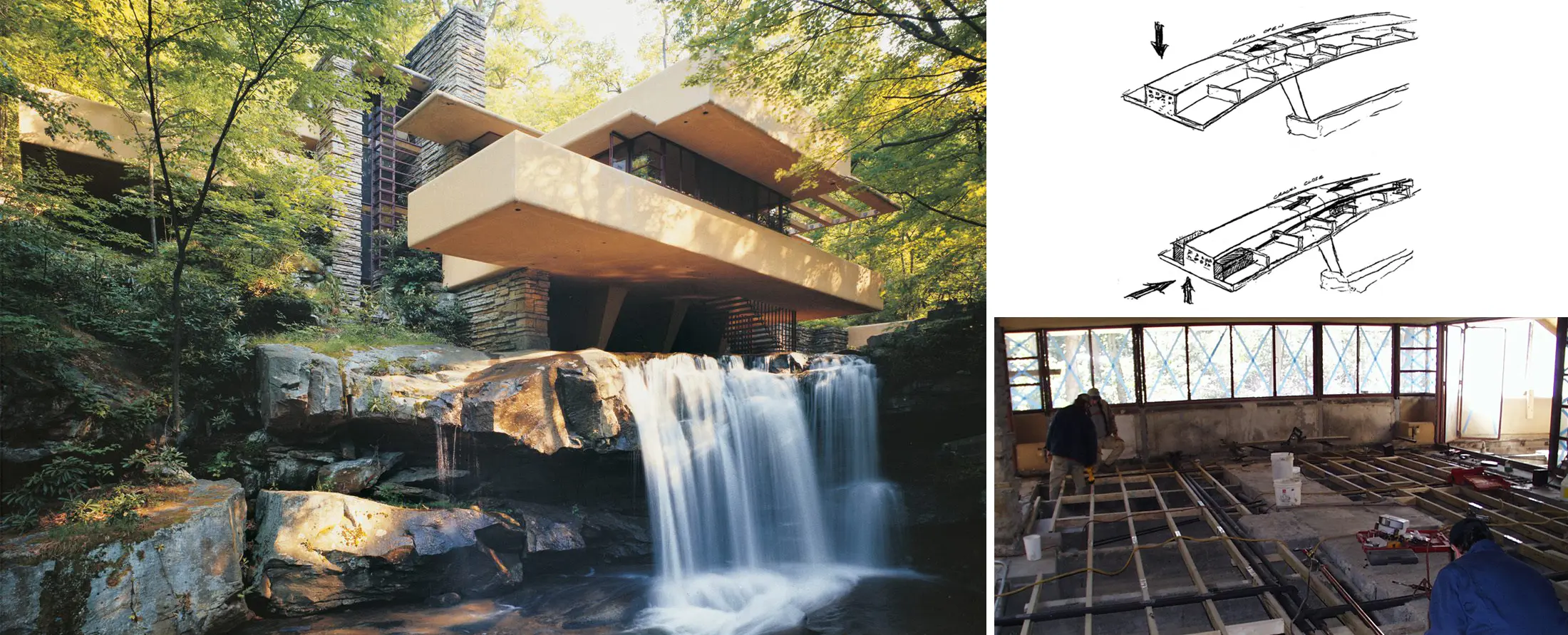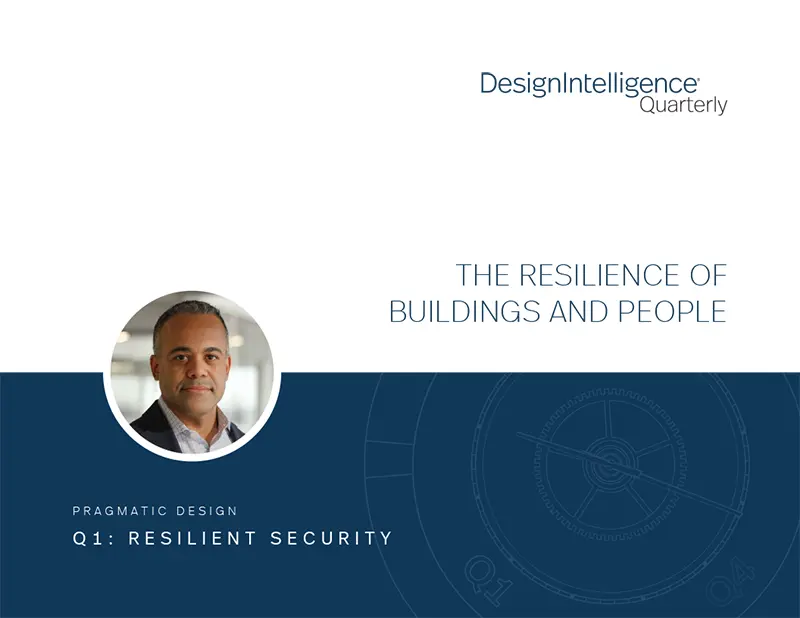The Resilience of Buildings and People
by Alastair Elliott
Principal/Director of Operations, Silman, A TYLin Company
March 8, 2023
Silman’s Alastair Elliott shares notable examples of the capacity of buildings – and people – to change.
A Changing Context
We live in an ever-changing world. In response, we humans continue to find ways to innovate and improve our lives. Advances in medical research have enabled us to live longer and combat new diseases, all while the global population has increased fourfold in just the past century. Concurrently, technology advances have connected the planet in new ways, through physical connections via planes and high-speed rail, and virtual connections facilitated by undersea cables, satellites and data centers. This networked condition has, in turn, contributed to more globalization.
Global trade is highly interdependent. Factories in one country now sit idle due to disruptions in the supply of raw materials in another country. The health of a local economy now depends upon issues happening thousands of miles away. Within any location or market, some sectors thrive while others struggle. New companies are born, grow and evolve. Others go out of business or lose their identities. Others resort to mergers, acquisition or repurposing and rebranding as survival strategies. The message is clear: Those who fail to be aware of their changing context and fail to adapt will perish.
Can Buildings Adapt?
This mandate for change has a direct relation to the built environment. Buildings and infrastructures are hardly static. They begin to deteriorate and become obsolete from the day they are constructed. Subject to the environment that surrounds them, forces such as wind, rain and snow all contribute, as do changing markets, economic and community needs and conditions. Less frequent hazards, such as hurricanes, earthquakes, fires and floods, as well as ongoing wear and tear from building occupants, also contribute. As a result, the built environment needs to be constantly renewed. Take for example a single-family home that requires constant upkeep. The homeowner will pay for this upkeep to keep their family secure. The need to house the family drives that economic decision. In another scenario, take a factory. As long as that factory is manufacturing a product people are buying, it has a reason to exist, and the owner will continue to invest in its upkeep. However, with technological or market changes, the factory may no longer have a reason to exist. For example, thanks to the washing machine, there is only one washboard factory left in the U.S.1 Sometimes a factory can be easily repurposed. Other times, it’s more difficult and will lay abandoned for years until the right redevelopment opportunity surfaces.
Recent Responses
To understand the role of design professionals in responding to change, let’s consider some examples and how they are adapting to remain relevant and viable. Our firm has been involved in each of these projects – each a prominent, well-known case study – and lesson in designing resilient, secure facilities and retrofitting those of value.
In the past, major flooding in New York City had been a known risk among design and planning professionals. Witness countless doomsday-scenario television shows, where much of the city is under water. Environmentalists have sounded the alarm for years related to global warming and sea-level rise. But shockingly, in New York it felt abstract or theoretical. Prior to 2012, the building code allowed the design flood elevation to be the same as the base flood elevation, whereas other jurisdictions required additional freeboard height. People felt reasonably protected, or at least this issue was not the major concern. Designing hardening facilities to withstand terrorist attacks was more top of mind. Simply renewing old infrastructure, maintaining the subways and rebuilding bridges followed closely as a priority. All are important to keep a metropolis like New York running safely.
Hurricane Sandy and Flood Control
Hurricane Sandy changed the focus. The last disaster is always front of mind. As a building code wind event, Hurricane Sandy was not that significant. Yes, winds were high, but they were below the building design wind-speed criteria required by the New York City building code. Many other factors also enter into calculating actual design pressures, but the pressures are still a function of the square of the wind speed. From the standpoint of a design wind event, the city’s buildings and infrastructure have not yet been significantly tested. But Sandy’s flood elevation exceeded published design event values. The New York City Department of City Planning reported that more than half the flood-damaged buildings were outside the then-100-year flood zone.2 To make things worse, many buildings affected were built prior to current flood guidelines.
Take, for example, commercial high rises in lower Manhattan. While the building structures generally survived, the overall buildings did not remain functional after Hurricane Sandy. Flooded basements meant destroyed mechanical and electrical systems. Not only did the individual buildings lose power, but part of the power grid was offline as the Con Edison 14th Street power plant was also flooded.
As highlighted by Hurricane Sandy, flood control needs to become an elevated priority. In New York, current building renovations incorporate flood mitigation measures where their ground floors are below the current design flood elevation. Allowing the ground floor to flood is simply not workable. Flooding would make the ground floor unusable, damage elevators and render the balance of the building inaccessible. The building code would not allow this approach. To protect the interior, the building exterior must also be addressed as flood waters would affect the walls, windows and doors.
Made in New York
The New York City Economic Development Corporation is currently developing the Made in New York Campus at Bush Terminal. Located in the Sunset Park area of Brooklyn and originally consisting of several warehouse buildings constructed in the late 1800s to the early 1900s, it was a significant part of New York’s industrial past.3 The building’s uses and tenants evolved through the Great Depression, World War II and beyond. The portion being redeveloped will house a film and production hub and a garment manufacturing hub. While the rebirthed campus will feature new construction, it will also rely on the renovation of two existing manufacturing buildings. Like much of New York City’s waterfront, the campus is in a flood zone and requires flood protection measures.
Protective barriers can be designed for doors and windows, but they must anchor back to the existing walls. Walls that are multi-wythe load bearing masonry, effective at supporting multistory buildings, are not typically adequate to withstand the lateral pressure rising flood waters would exert. Two approaches were taken depending on location. In the first approach, a removable independent flood wall barrier system was installed along with additional requirements. New foundations were required to support the flood barrier and the force floor waters will exert on them. Since most flood barrier systems are subject to some leakage and rain can occur simultaneously, a drainage system on the dry side of the flood wall was also required. Independently powered pumps were also required to pump the water out. In the second method, existing masonry walls were reinforced with a new concrete liner wall with sufficient strength to withstand the force of the flood water. The liner wall was constructed on the building interior to avoid negatively impacting historic brick façades. This solution came with a trade-off since it uses valuable interior real estate. With careful coordination among the design team, the right approach can be selected, and functionality of the adjacent areas can be maintained.

Left: Carnegie Hall Photo by Daniel Lobo, Flickr | Right: Carnegie Hall excavation Photo Courtesy: Silman
Carnegie Hall
Perhaps the world’s most beloved concert hall, Carnegie Hall, opened in 1891. A short 60 years later, in the 1950s, it was deteriorating and was marked for demolition, facing the same fate as another New York landmark, Penn Station. The building’s prime occupant, the New York Philharmonic, planned to depart for a new home at Lincoln Center. Thanks to a push to preserve Carnegie Hall led by Isaac Stern and other civic leaders, the city of New York purchased the building and designated it as a national (1964) and city (1967) landmark. But the economic forces that led to its deterioration did not subside. A resilient response was needed for the venue to remain viable and relevant.
In the 1980s, a renovation restored some of the building’s historic integrity. For example, the retail spaces at the corner of 57th and Seventh Avenues were removed, and the masonry façade was restored. Public accessibility became a focus. While the original lobby required several steps to gain access, the lobby was lowered to street level and new elevators were installed to create universal access.
Creation of Zankel Hall
In the 1960s, a historic smaller venue in the building’s basement had been converted to a movie cinema. Carnegie Hall decided to recreate the venue as a performance space to be called Zankel Hall but needed to adhere to modern facilities standards for performers and audiences. New technology was also required to allow broadcasting events. To accomplish all this, more volume was required. Constrained by Stern Auditorium above (the hallowed space most people envision when they hear the words “Carnegie Hall”), it was not possible to build up. Our only option was to dig down. To create the volume required, 6,000 cubic yards of rock was excavated below the hall. To do this, much of the building had to be temporarily shored so existing foundations could be removed and recreated at a lower elevation.
Acoustical Upgrades
Acoustics are a paramount issue for any concert hall. In the early 1900s, the New York City Subway was constructed under Seventh Avenue adjacent to the concert hall. The noise from the passing trains has been a historical challenge to mitigate. The creation of Zankel Hall was also an opportunity to install acoustic isolators on some foundation elements to help with this longstanding issue. Both performance spaces, Stern Auditorium and Zankel Hall, also needed to be acoustically isolated from one another. This work was technically challenging and required a massive economic investment. But it was done nonetheless, based on thinking ahead and to keep Carnegie Hall relevant for the future. These changes respected the past, protected the historic landmark and upgraded one of the world’s most loved concert halls with greater accessibility, flexibility, technology and amenities for a changing world.

Fallingwater, post-tensioning sketch, and construction image
Images Courtesy: Silman
Fallingwater Restorations
Another of America’s best-loved buildings is Fallingwater, Frank Lloyd Wright’s iconic masterpiece building in Bear Run, Pennsylvania, the summer home of Edgar Kaufman. In the 1990s, our firm was fortunate enough to be involved in some remedial work to this architectural treasure. Despite is dramatic siting and structural daring-do, the building, after decades, was experiencing significant deflection, cracking and erosion of reinforcing steel. Despite extravagant costs, the decision was made to deploy after-the-fact post-tensioning of the concrete cantilever beams to stabilize the sagging cantilevers and prevent collapse. Thanks to the painstaking on-site work of many expert designers and craftspeople across the world, we were able to adapt and save this ailing landmark and preserve its availability for countless generations to come. Resilience indeed.
Many Questions
How do we come back from these kinds of chaos events? In such situations, owners need to get their buildings back online as soon as they can so tenants can come back. They need to reassure tenants the buildings will function after the next event. The attitude becomes: How to live with the risk; how to adopt prudent measures, how to meet city regulations, insurer requirements and reattract tenants. Approaches and preparations vary. At my office in lower Manhattan, the landlord performs periodic flood barrier deployments. If a storm is predicted, some landlords in the area deploy their flood barrier systems. On some occasions when I see this, I immediately check the weather. Is this a periodic practice, or do I need to make sure I am always personally prepared. What about the others I am responsible for? My family, friends, colleagues and community? Living in the city, I am accustomed to getting anything I need or want delivered. But no one will deliver in a storm. Am I self-sufficient? Do I have a plan and fallback strategy?
Other tough questions come to mind. Where buildings have reached the end of their useful lives, is it worth it to renew them? Does building or rebuilding in flood areas match larger sustainability goals? What is the correct prediction for sea-level rise? Can we do it? Structurally, the answer is almost always yes — it just depends on how much we want to spend. Our firm founder, Bob Silman, used to say: “The question isn’t can we do it, it’s ought we do it?” An engineer’s optimism to be sure, but in a world of increasingly scarce resources and greater social and environmental pressures, it’s a question that is becoming much more difficult to answer.

Building Back Better
These case studies illustrate that change can be difficult but is necessary. When it comes to the built environment, design professionals and planners must carry the burden of deciding what is important to keep, what should evolve and what should go. Bush Terminal and Carnegie Hall still exist, but as very different buildings from their original forms. Both proudly retain their historic masonry and cast-iron structures but now also incorporate modern steel and reinforced concrete. These structural adaptations account for issues that were not concerns when they were first constructed. Fallingwater lives and so do many other similar buildings that at one time faced their own peril.
Beyond mere buildings and structures, these kinds of evolutionary changes also relate to cities, people and communities. External forces continue to affect our lives, on occasion, offering little control.
It takes little more than understanding of the past few years of COVID-19’s impact to cement this point. Who among us has not had their lives changed in some way because of the pandemic? We have coped with its affects, some have died. Many are working remotely, and we are now revising our homes, offices and real estate portfolios and policies as a result. We have learned much in the process. Technology advancements have played a major part in these adaptations — but so has the resiliency of the human spirit. Some jobs have disappeared, with negative impact on city tax bases and devastating for the families that relied on that income.
But we have little choice. We must continue to evolve and react to these forces. So many decisions. Do we reinforce or adapt our structures? Do we pick up and move (like an abandoned factory, or a demolished building)? Do we switch our lives’ gears and do something new (like the Bush Terminal in the Made in New York project) or do we evolve like Carnegie Hall? In each case, the answers will be found by thorough awareness of context, history and future. Each will depend on its situation. Each will require us to study the issues, weigh the pros and cons and decide what is right — for now and for the future.
Choose wisely.
Alastair Elliott is principal and director of operations at Silman, a TYLin Company, a structural engineering and consulting firm based in New York City. Alastair joined Silman in 1995 and since 2014 has led the firm as principal and is now director of operations. He has overseen a broad range of project types for cultural and educational institutions, places of worship and hospitality in renovation, adaptive reuse and new construction. He has played a key role in the firm’s use of technology and infrastructure. Alastair is a lecturer in Architecture at Yale School of Architecture and was previously an adjunct assistant professor of Architecture at Columbia University Graduate School of Architecture, Planning and Preservation, a guest lecturer and studio critic at Cornell University College of Architecture Art and Planning and at Parsons, the New School for Design. He is active in industry organizations and is a past president of the Structural Engineers Association of New York (SEAoNY). He was also a member of the 2014 New York City Building Code revision committee and currently serves on the Board of Directors and treasurer for the Design Trust for Public Space. He holds a Bachelor of Science degree from the University of Miami and a Master of Engineering degree from Rensselaer Polytechnic Institute.
FOOTNOTES:
1Jennifer Billock, “Only One Factory in the United States Still Makes Washboards, and They Are Flying Off of
Shelves,” Smithsonian Magazine, November 11, 2020. https://www.smithsonianmag.com/travel/only-one-factory-north-america-still-makes-washboards-they-are-flying-off-shelves-180976194/.
Accessed February 10, 2023.
2Department of City Planning, City of New York, “Hurricane Sandy: Initial Lessons for Buildings,” December 17,
2012. https://www1.nyc.gov/assets/planning/download/pdf/plans-studies/climate-resilience/presentation_sandy.pdf.
Accessed February 10, 2023.
3“Industry City,” Wikipedia, https://en.wikipedia.org/wiki/Industry_City.
Accessed February 10, 2023.


